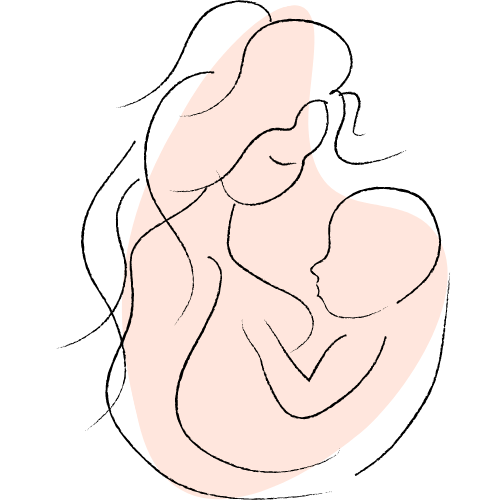Although the sex of the baby is determined genetically from the minute you conceive, and its sex organs start developing from 11 weeks, it can be a long four-and-a-half months until an ultrasound can actually confirm the gender.
Here we look at all the different symptoms you’re having a boy, from old wives tales – some more reliable than others – to medical procedures – some safer than others – to see how reliable they are.
1. Baby’s heart rate is slower than 140 beats per minute
This test of a baby’s sex suggests that if the heart is pumping faster than 140 beats per minute, you will be having a girl. Although it sounds like a medical diagnosis, in fact when a study was carried out from 1997 to 2003 on 477 bubs tested in the first 12 weeks, the boys’ hearts clocked in a little bit faster at 154.9 beats per minute while the girls strolled in at a leisurely 151.7.
Actually, this difference isn’t statistically significant. The study just showed all babies should have a heart rate over 140 beats per minute in the first trimester, regardless of their sex. The heart rate slows down as the pregnancy progresses.
2. Morning sickness that’s not too bad
It has been suggested that pregnant with boy symptoms include less vomiting because higher hormone levels in girl babies cause worse morning sickness. British medical journal The Lancet did publish one study to show that mothers with hyperemesis gravidarum (extreme morning sickness suffered by the likes of Princess Kate and Amy Schumer) are more likely to have girls.
But, as you may recall, poor old Kate was affected by this condition for each of her three pregnancies, and in the end the odds went the way of the boys, with two sons to one daughter. So not a sure fire predictor then of baby’s sex. Also, if it’s your first child, how do you know if the morning sickness is worse or not?
3. Lustrous hair and skin
When up the duff with a boy, the old wives tales say your skin is more likely to be pimple free (again, due to not having those pesky girl hormones alleged to cause breakouts) and your hair thick and shiny (because of the benefits of male testosterone).
In reality, pregnancy plays whack with all your hormones and the difference between boy baby and girl baby hormones is not significant. It could go either way, or both – good and bad skin, full and limp hair – over the course of the nine months.
The Sun does report a French study that says “mums who suffer from acne while pregnant are 90 per cent more likely to give birth to a girl.”
In an article on Carolina Parent, Dr Kelly Leggett weighs in on the hair myth: “Your age will affect your hair texture more than your pregnancy.”
“Normally, a woman loses about 100 hairs a day as part of hair growth’s natural cycle,” ob-gyn Dr Aviva Stein says in the same article. “During pregnancy, regardless of baby gender, the hormone estrogen prolongs the pregnant woman’s hair-growth phase, resulting in less shedding of hair.”
4. If it’s all out front
Another long-believed story is that if the pregnancy weight gain is heavy on the hips and bum, it’s a girl (due to that pesky estrogen again) but if the baby seems to only be a bump out front, then it is more likely to be a boy.
According to the BBC, this theory doesn’t hold water, as the shape of the bump depends on the foetus’s position: “If it has its back alongside the mother’s front this makes her belly stick right out. If the baby’s back is parallel with the mother’s back the result is that the abdomen looks flatter. And as the position the developing baby adopts is not dependent on its sex, it is a myth that the shape indicates whether it is a boy or a girl.”
5. A hankering for chips, not ice cream
There is a theory going around that if you crave salty, savoury foods, you are having a boy, and that if the desperate desire is for sweet stuff, it’s more likely to be a girl. Kinda like that whole “That’s What Little Girls Are made Of” rhyme, suggesting “Sugar and spice and all things nice” mean a daughter.
So what happens if you crave the old pregnancy favourite of pickles and ice-cream combo? Savoury and sweet?
“There’s no scientific evidence to back up any of these
In fact, that little critter inside you is just sucking up all your nutrients as it grows, so what you crave is most likely what your body is running out of, regardless of if it’s a boy or a girl.
6. Big appetite
The old story that mums eat more when carrying boys seems to be fact, with a US study reporting that of 244 women tested, on average those with boys on board ate 10% more than those with girls.
In the British Medical Journal, Prof Dimitrios Trichopoulos writes: “Our findings support the hypothesis that women carrying male rather than female embryos may have higher energy requirements.”
7. Keeping it on the down-low
The most popular belief about how you can tell what sex the baby will be is by looking at how you are carrying, with the theory that girls sit higher, and boys hang down the bottom.
Similar to the “where you gain weight” theory, there doesn’t seem to be any good reason – or basis – for this old wives tale.
8. The wedding ring spin
Tie your ring to a piece of string and hold it in front of your belly. If it swings backwards and forwards, it’s a boy, but if it goes around in circles, it’s a girl. (Though some sites say it’s the other way around! So that just goes to show you how reliable this myth is.)
